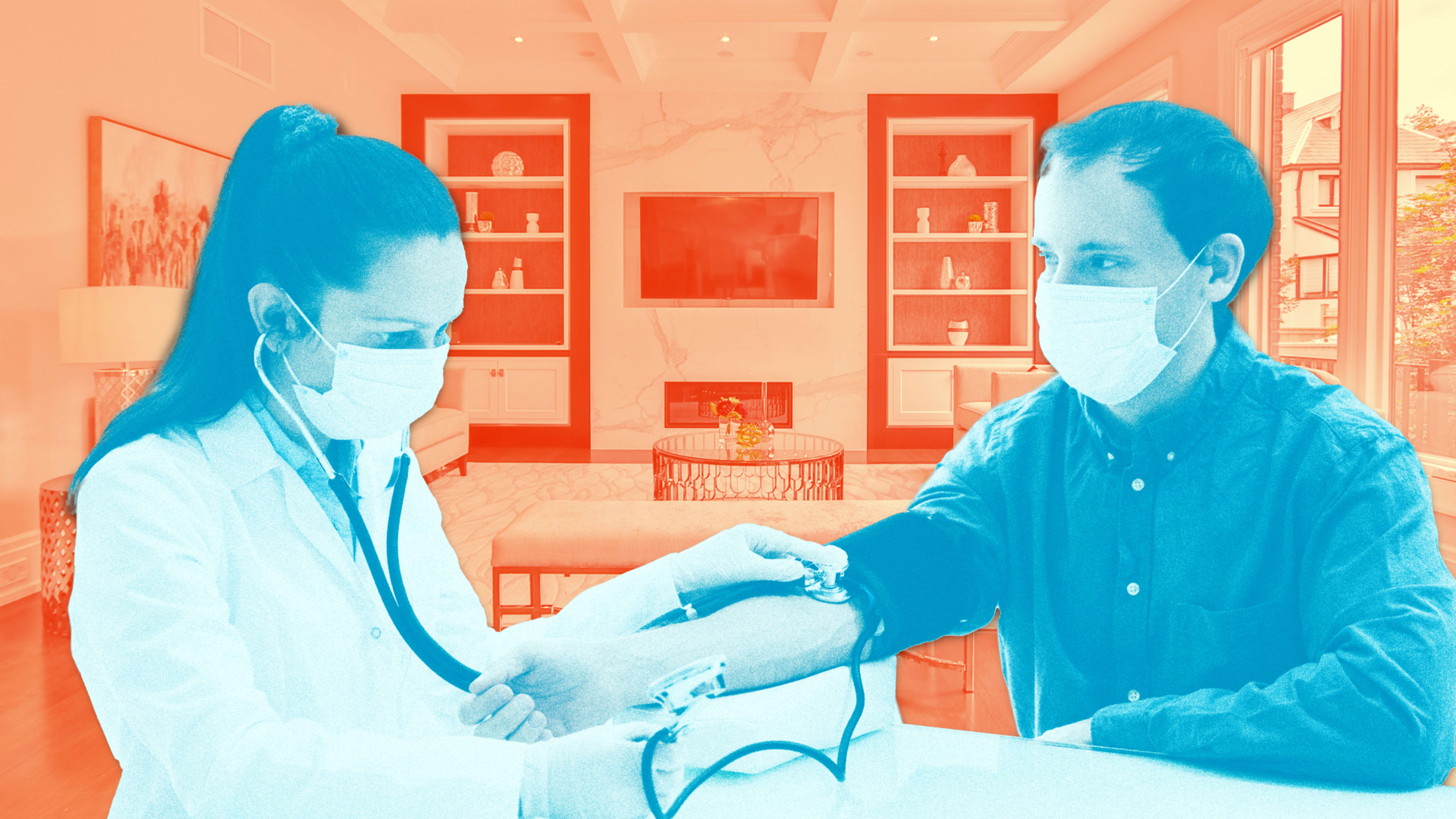At first blush, the idea of moving most healthcare from hospitals and medical offices to people’s living rooms seems impossible. Of course, once upon a time, so did getting your groceries without leaving your couch. Or voting. Or attending college. Or talking to your doctor. Or virtually any of the activities in our daily lives that used to require going somewhere and doing something.
There’s not many silver linings to COVID-19, but the emergence and acceptance of virtual healthcare is certainly one of them. Patients and doctors are now far more comfortable interacting over video or text, discussing intimate healthcare issues, prescribing treatment and conducting the follow up, all without anyone having to go anywhere. No one with a fever prefers climbing into a car or squeezing onto a crowded subway to sit in a germ-infested waiting room only to eventually have a doctor ask the same standardized questions that could have fit into a text.
Consumers, regulators, payers, doctors, and patients now all accept that basic value proposition. But what if healthcare could be decentralized far beyond routine visits and basic illnesses?
Everyone agrees that healthcare in the United States is way too expensive, but when we examine the cost of care, we rarely question one of the largest underlying costs: hospitals and large medical facilities. Think about most procedures that take place in a hospital: chemotherapy, dialysis, screenings, x-rays, childbirth. Every one of those requires tremendous fixed costs: the capital for building and maintaining the facility, staffing and administrative overhead, and then all of the infection risks patients take just by stepping foot in a hospital.
In the past, before telemedicine, before the on-demand economy, there just wasn’t a logical alternative to expensive, centralized facilities. Now, with radical advances that make medical equipment smaller and more mobile, there is.
We’ve already seen major hospitals and health systems from Mount Sinai to Intermountain to Brigham launch programs where patients are “admitted” in their own homes and receive hospital-level care—administered through a combination of telehealth, 24/7 remote monitoring, and in-person visits—for conditions such as congestive heart failure, kidney-related disease, COPD, and certain type of cancer. Dispatch Health recently partnered with Humana to serve its eight million Medicare patients, moving urgent care (everything from stitches to cultures to IV fluids) from the hospital to the home. Startups like GetLabs and Workpath (both part of the Tusk Ventures portfolio) conveniently send phlebotomists to the home to administer blood draws that used to require extra trips to the lab. We’ve even seen life sciences adopt the remote model, with a growing number of decentralized clinical trials where participants are monitored from their home.
So, what would it mean to actually move 50% of visits from hospitals and medical offices to people’s homes over the next decade? First, it would mean a lot of direct savings. The American Hospital Association reports that hospital-at-home care has an average 25% lower cost of stay, in addition to the savings from the significantly lower readmission rates and emergency room visits.
Second, it would make patients not only more productive but more compliant. Amazon, Uber and every other seamless web-based service has proven that the more friction you remove from any process, the more likely the customer is to complete a transaction. The same applies to healthcare. The less time, cost and effort involved in getting patients to get preventative care, the more they’ll do it and the better the outcomes can be. One large study found that patients who receive hospital-care level care at home have a 20% reduction in mortality.
Over time, these changes can help bend the cost curve. Because the more patients expect to receive their care remotely, the less the healthcare sector will need to keep spending money to build and maintain comprehensive brick-and-mortar buildings. Yes, there are likely some procedures that will always require a specific type of professional facility. But just as routine surgery has moved from hospitals to surgery centers that now have patients in and out within hours, in the near future those same procedures may be delivered remotely.
So what can policymakers do to encourage a world of decentralized healthcare? A tremendous amount of progress has already been made over the past 12 months around virtual care policies and reimbursement. We shouldn’t let up the gas pedal just because life, post-vaccine, is beginning to get back to normal.
More important, perhaps, we should consider creating disincentives to build new hospitals or expand existing facilities. That can be done though zoning policy. It can be done by eliminating tax breaks for large facilities. It can be done by changing reimbursement policies, funding formulas or any number of mechanisms.
When it comes to healthcare, our only goal should be to make quality care as accessible and affordable as possible. What we’ve always done shouldn’t matter. The political influence of hospital executives or unions like SEIU shouldn’t matter. While many of the stakeholders in healthcare may have forgotten this, they’re the means to helping patients, not an end. Their interests are secondary to actually improving outcomes.
Innovation means that healthcare can be delivered in a way that’s faster, cheaper and better. And while the U.S. healthcare system has more than its share of problems, innovation has always been our greatest strength. The time has come to use it to upend the healthcare model altogether. We can’t afford not to.
Bradley Tusk is a venture capitalist, political strategist, philanthropist and writer. Quinn Shean is an attorney and expert on digital health policy, working with startups invested in by Tusk Ventures. Tusk Venture Partners has multiple investments in digital health including Ro, Wheel, Alma, BoulderCare and GetLabs.
Recognize your brand’s excellence by applying to this year’s Brands That Matter Awards before the early-rate deadline, May 3.
